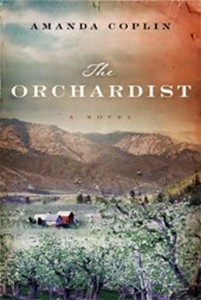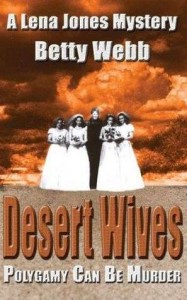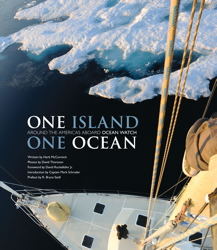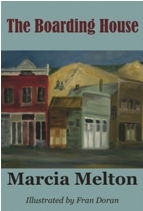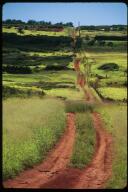 “Slow down, this is Molokai” the road sign advised as we drove our rental car from the Molokai airport. It’s good advice, but challenging when you’ve just arrived from a rush-rush and highly scheduled world. It didn’t take long to get into the swing of things though and oh! letting go and slowing down was one of the best parts of our two-week visit to Molokai, the Most Hawaiian Island.
“Slow down, this is Molokai” the road sign advised as we drove our rental car from the Molokai airport. It’s good advice, but challenging when you’ve just arrived from a rush-rush and highly scheduled world. It didn’t take long to get into the swing of things though and oh! letting go and slowing down was one of the best parts of our two-week visit to Molokai, the Most Hawaiian Island.
The fifth largest of the Hawaiian chain and located just south of Oahu, Molokai has made no attempt to keep up with the tourist attractions of its big sister islands, Hawaii, Oahu, Kauai and Maui. Rugged mountains, crashing surf, sweeping empty beaches, a definite lack of tourist catering and strong Hawaiian culture lure only a certain type of traveler. You won’t find a commercial lu’au, big resorts, mega shopping centers, or a number of fancy restaurants here. But if you’re looking for a true Hawaiian adventure, where native culture is woven into everyday life, Molokai is just the place for you. Outdoor activity is supreme here with horse-back riding, biking, hiking, kayaking and swimming, all under the umbrella of wild outdoor beauty. Going for a drive is a pleasure with very little traffic. We drove as long as two hours without encountering another vehicle.
While the main roads going west to east, Highways 460 and 450, are paved, many roads are not. No road circles the island. You can pretty much drive from one end to the other, but then you must turn around and return on the same road. There isn’t a single stoplight on Molokai and we never saw a building over two stories high.
The people of Molokai love to share their culture and sites. For a small island–40 miles long and 10 miles wide–it possesses numerous natural wonders. One of the first things I would recommend is buying a good map. The most accurate one we found is published by the University of Hawaii Press, available at many of the Molokai stores. Road signs aren’t always posted and if you’re like us, poking around back roads is what we love to do most, but getting hopelessly lost isn’t.
Lodging is available through condominiums, bed and breakfast, home and cottage rentals and small-scale hotels. One constant condition in Molokai is the ever-changing ownership and availability of lodging, stores and restaurants. A good idea is to check the Internet for rental opportunities. We did, and were delighted with our condo located close to the beach, and only a few steps from a gorgeous pool.
Molokai’s main town, Kaunakakai, is located in the center of the island on the south coast. In appearance Kaunakakai is unassuming with its tin-roofed buildings but you’ll find pretty much everything you’ll need–a gas station, groceries, clothing, hardware, pharmacy, and bakery. At Molokai Fish & Dive you can make arrangements for a cruise, a fishing expedition, a snorkel dive, or a kayak adventure at the largest barrier reef in Hawaii. Another excellent stop is the Kamakana Gallery, featuring local craftsmen and artists is located in Kaunakakai on Ala Malama Avenue.
We noted that most Hawaiians speak Hawaiian to one another; even the children, a strong indicator of their cultural pride. Most people do speak English as well, so language is not a barrier for visitors.
We brought our own, but you can also rent snorkeling gear. You must be cautious though and inquire first before swimming. Many of the beaches are treacherous with strong currents, rough wave action and rocky shores. Swim only at recommended locations. Generally, south shore beaches, such as Murphy’s Beach Park, are sheltered and quiet within the protection of the barrier reef, while east end beaches outside the reef can be dangerous with pounding surf. North and west shore beaches range from quiet to rebellious, depending on the season. Ask about local conditions before you enter the water.
Guided and unguided hiking trails abound here. The Halawa Valley guided hike is beautiful and not too challenging. Cool off by taking a delightful swim at the base of Moa’ula Falls. Another splendid guided hike is to the Mo’omomi Beach Preserve where you see unique coastal dunes that are an important nesting site for the endangered green sea turtle. On the Kamakou Preserve guided tour you follow a boardwalk through rain forest near the summit of Molokai’s highest mountain, home to more than 200 species of plants found nowhere else in the world. Unguided tours are all over the island–follow mountain trails, miles of sparkling beaches or red-dirt roads winding through lush fields of crops including sweet potato, watermelon, coffee, corn, tomato, onion and papaya..
Camping is popular on Molokai at state, county or private parks. Horseback riding and bicycling are available through various outlets. Contact the Molokai Visitor Association for names of camping sites, hiking guides, bicycle rental and horseback riding opportunities.
A drive to the Halawa Valley at the extreme eastern tip of the island is a spectacular destination and is known as one of the world’s great wilderness regions. As you enter the valley, the road narrows to one lane, so drive with caution, but the view is worth the adventure! The end of the road opens up to a tiny bay and a breathtaking view of a valley so green I had to keep reminding myself it was real.
One memorable day we rode mule-back down the 1,786-foot Kalaupapa Trail to visit Kalaupapa National Historical Park on the northern coast to learn about Father Damien’s work in a leper colony. The adventure was sobering, yet inspirational.
If your idea of a great getaway is wide open space, crashing seas, pristine barrier reefs, breathtaking views, all wrapped up in friendly local culture and a low-key, old-fashioned “aloha” spirit, you’ll surely find your dream on Molokai. For more information, visit http://www.gohawaii.com/molokai


